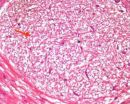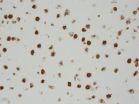(Press-News.org) Nanotechnology and Functional Materials, Uppsala University have developed a paper filter, which can remove virus particles with the efficiency matching that of the best industrial virus filters. The paper filter consists of 100 percent high purity cellulose nanofibers, directly derived from nature.
The research was carried out in collaboration with virologists from the Swedish University of Agricultural Sciences/Swedish National Veterinary Institute and is published in the Advanced Healthcare Materials journal.
Virus particles are very peculiar objects- tiny (about thousand times thinner than a human hair) yet mighty. Viruses can only replicate in living cells but once the cells become infected the viruses can turn out to be extremely pathogenic. Viruses can actively cause diseases on their own or even transform healthy cells to malignant tumors.
"Viral contamination of biotechnological products is a serious challenge for production of therapeutic proteins and vaccines. Because of the small size, virus removal is a non-trivial task, and, therefore, inexpensive and robust virus removal filters are highly demanded" says Albert Mihranyan, Associate Professor at the Division of Nanotechnology and Functional Materials, Uppsala University, who heads the study.
Cellulose is one of the most common materials to produce various types of filters because it is inexpensive, disposable, inert and non-toxic. It is also mechanically strong, hydrophyllic, stable in a wide range of pH, and can withstand sterilization e.g. by autoclaving. Normal filter paper, used for chemistry, has too large pores to remove viruses.
The undergraduate student Linus Wågberg, Professor Maria Strømme, and Associate Professor Albert Mihranyan at the Division of Nanotechnology and Functional Materials, Uppsala University, in collaboration with virologists Dr. Giorgi Metreveli, Eva Emmoth, and Professor Sándor Belák from the Swedish University of Agricultural Sciences (SLU)/Swedish National Veterinary Institute (SVA), report a design of a paper filter which is capable of removing virus particles with the efficiency matching that of the best industrial virus filters. The reported paper filter, which is manufactured according to the traditional paper making processes, consists of 100 percent high purity cellulose nanofibers directly derived from nature.
The discovery is a result of a decade long research on the properties of high surface area nanocellulose materials, which eventually enabled the scientists to tailor the pore size distribution of their paper precisely in the range desirable for virus filtration.
Previously described virus removal paper filters relied heavily on interception of viruses via electrostatic interactions, which are sensitive to pH and salt concentrations, whereas the virus removal filters made from synthetic polymers and which rely on size-exclusion are produced through tedious multistep phase-inversion processing involving hazardous solvents and rigorous pore annealing processing.
Incidentally, it was the Swedish chemist J.J. Berzelius (1779-1848), one of the most famous alumni of Uppsala University, who was the first one to use the pure wet-laid-all-rag paper for separation of precipitates in chemical analysis. In a way, the virus removal nano-paper filter developed by the Uppsala scientists is the modern day analogue of the widely popular Swedish Filter Paper developed by Berzelius nearly two centuries ago.
INFORMATION:
For more queries contact Associate Professor Albert Mihranyan. Email: albert.mihranyan@angstrom.uu.se Tel. +46 70 167 90 37.
The article is published in the Advanced Healthcare Materials journal on March 31, 2014.
http://onlinelibrary.wiley.com/doi/10.1002/adhm.201300641/abstract
Nano-paper filter removes viruses
2014-03-31
ELSE PRESS RELEASES FROM THIS DATE:
CAMH researcher discovers 2 new genes linked to intellectual disability
2014-03-31
(Toronto) March 31, 2014 – Researchers at the Centre for Addiction and Mental Health have discovered two new genes linked to intellectual disability, according to two research studies published concurrently this month in the journals Human Genetics and Human Molecular Genetics.
"Both studies give clues to the different pathways involved in normal neurodevelopment," says CAMH Senior Scientist Dr. John Vincent, who heads the MiND (Molecular Neuropsychiatry and Development) Laboratory in the Campbell Family Mental Health Research Institute at CAMH. "We are building up a ...
NTS's role in the protection of pre-moxibustion on gastric mucosal lesions
2014-03-31
Moxibustion may have protective effects on the stomach mucous membrane against stress gastric ulcer. The potential mechanism of moxibustion may be mediated by transforming growth factor-α, gastric mucosa cell proliferation, inhibition of apoptosis, and the expression of heat shock protein-70. Previous studies have shown that somatic sensation by acupuncture and visceral nociceptive stimulation can converge in the nucleus tractus solitarii (NTS) where neurons integrate signals impacting on the function of organs. To explore the role of the NTS in the protective mechanism ...
New study finds biochar stimulates more plant growth but less plant defense
2014-03-31
In the first study of its kind, research undertaken at the University of Southampton has cast significant doubt over the use of biochar to alleviate climate change.
Biochar is produced when wood is combusted at high temperatures to make bio-oil and has been proposed as a method of geoengineering. When buried in the soil, this carbon rich substance could potentially lock-up carbon and reduced greenhouse gas emissions. The global potential of biochar is considered to be large, with up to 12 percent of emissions reduced by biochar soil application.
Many previous reports ...
Major breakthrough in stem cell manufacturing technology
2014-03-31
Scientists at The University of Nottingham have developed a new substance which could simplify the manufacture of cell therapy in the pioneering world of regenerative medicine.
Cell therapy is an exciting and rapidly developing area of medicine in which stem cells have the potential to repair human tissue and maintain organ function in chronic disease and age-related illnesses. But a major problem with translating current successful research into actual products and treatments is how to mass-produce such a complex living material.
There are two distinct phases in the ...
Wen Dan Tang improves insomnia-related anxiety
2014-03-31
Ghrelin, a brain-gut peptide that induces anxiety and other abnormal emotions, contributes to the effects of insomnia on emotional behavior. In contrast, the traditional Chinese Medicine remedy Wen Dan Tang reduces insomnia-related anxiety, which may perhaps correspond to changes in the brain-gut axis. This suggests a possible relationship between Wen Dan Tang's pharmacological mechanism and the brain-gut axis. Based on this hypothesis, a research team from Beijing University of Chinese Medicine in China generated a sleep deprivation rat model, and orally administered Wen ...
A breakthrough in creating invisibility cloaks, stealth technology
2014-03-31
Controlling and bending light around an object so it appears invisible to the naked eye is the theory behind fictional invisibility cloaks.
It may seem easy in Hollywood movies, but is hard to create in real life because no material in nature has the properties necessary to bend light in such a way. Scientists have managed to create artificial nanostructures that can do the job, called metamaterials. But the challenge has been making enough of the material to turn science fiction into a practical reality.
The work of Debashis Chanda at the University of Central Florida, ...
Early rehabilitation improves postsurgery neurofunctional outcome in spinal tumor children
2014-03-31
In children, primary spinal tumors comprise 4% of all tumors from the central nervous system. Spinal tumors can present with a variety of clinical signs and symptoms in children such as pain followed by motor regression, gait disturbance, sphincter dysfunction, sensory symptoms, torticollis, and kyphoscoliosis. Treatment of spinal tumors is based on tumor type, but surgical resection is the mainstay. Moreover, physical treatment and rehabilitation implementation are necessary in order to minimize the symptoms of the patients and develop present functions. Prof. Nezire Kose ...
A new study shows that even micro heart attacks are a major problem
2014-03-31
MINNEAPOLIS, MN – March 29, 2014 – Researchers at the Minneapolis Heart Institute at Abbott Northwestern Hospital have found that cardiac magnetic resonance (CMR) imaging may help doctors better identify which patients with mild heart disease are likely to develop more serious heart problems long term. CMR imaging provides supporting information to guide treatment decisions and help doctors provide targeted care for patients at highest risk. The research, led by Minneapolis Heart Institute Foundation Research Fellow Naohiko Nemoto, MD, will be presented at the American ...
Young women: Eat more fruits and vegetables now to protect your heart later
2014-03-31
MINNEAPOLIS, MN – March 29, 2014 – A diet rich in fruits and vegetables for middle-aged adults has been associated with reduced rates of coronary heart disease (CHD), especially in women. Now, research supported by the Minneapolis Heart Institute Foundation (MHIF) shows that for women, what you eat in your 20s may be just as important for your middle-aged heart. The results of the study, aimed at examining the extent to which young adults' diets are linked to cardiovascular health later in life, will be presented at the American College of Cardiology (ACC) meeting in Washington, ...
Fewer deaths with self-expanding TAVR versus surgery at 1 year
2014-03-31
WASHINGTON (March 29, 2014) — Transcatheter aortic valve replacement with a self-expanding valve prosthesis for the first time has demonstrated significantly lower death rates at one year compared with conventional surgical valve replacement in high-risk patients with severe aortic stenosis, according to research presented at the American College of Cardiology's 63rd Annual Scientific Session.
Worldwide, an estimated 300,000 people have severe aortic stenosis – a faulty valve in the main artery carrying blood out of the heart – and roughly a third of them are deemed unable ...



